 Previous Article
Previous Article
What Gap Should You Leave Between Decking Boards?
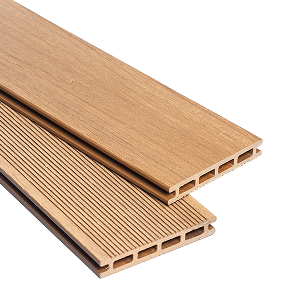
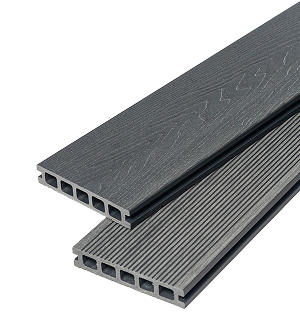
When looking to invest in composite decking, it’s important to factor in what kind of budget you can work within. You should determine what you’re willing to spend and estimate all the expenses associated with your landscaping project. In this guide, we will discuss the key cost factors for composite decking, including materials, labour, and accessories.
From our customer feedback, we understand that some of you might want to review everything with a quick glance. Please see our summary cost table below or use the ‘Jump To’ menu to find the specific section you need.
| Item | Estimated Cost per m² (VAT incl.) | Example Cost (20m² Deck) |
|---|---|---|
|
|
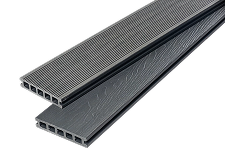
|
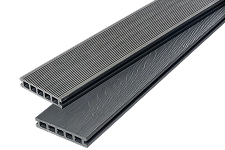
|
| Composite Decking Boards | £33 - £80+ | £660 - £1,600 |
| Timber Subframe & Posts | £25 | £500 |
| Clips & Screws | £8.25 | £165 |
| Professional Labour | £60 - £90 | £1,200 - £1,800 |
| Estimated Total | £126 - £203 | £2,520 - £4,065 |
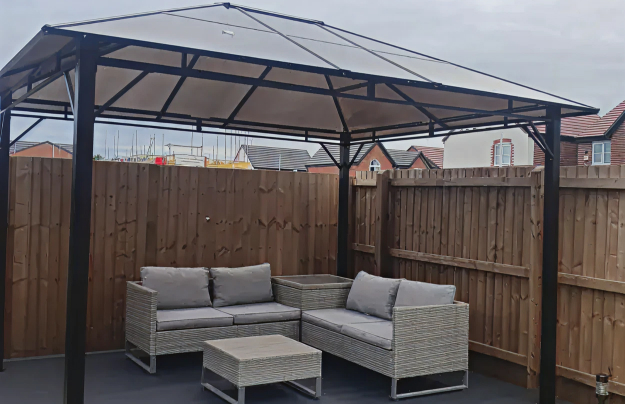
Composite decking is a superior material with an appearance that mimics wood, but it is more durable and aesthetically pleasing than timber. The price of the decking boards heavily depends on their quality.
You can buy composite decking boards for anywhere between £33 to well over £100 per m², depending on quality and material composition. A good rule of thumb is to always focus on quality and buy the best you can afford.
You will also need to purchase materials for the subframe (joists and posts), fixings (screws and clips), and landscaping fabric. You may also want to add accessories like balustrades, rails, and pergolas, which will add to the overall cost.
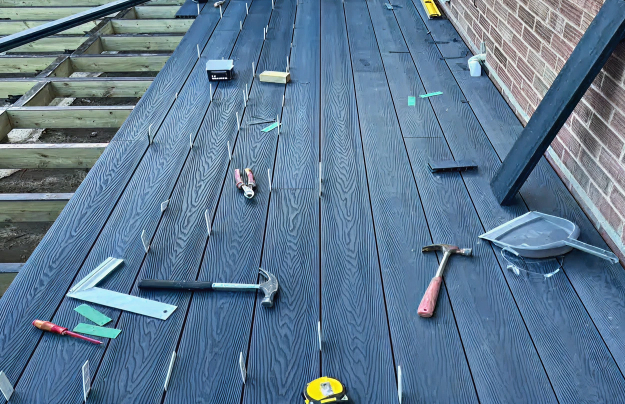
The next step is to budget for professional installation – the price will depend on the size and complexity of your project, as well as your geographical location.
The average labour cost for a standard installation is around £50-£80 per m². Certain designs, such as projects with curves or multiple levels, will take more time to install; which will be reflected in the final labour cost.
You will also need to purchase materials for the subframe (joists and posts), fixings (screws and clips), and landscaping fabric. You may also want to add accessories like balustrades, rails, and pergolas, which will add to the overall cost.
highly advisable to also agree on a clear timeframe for completion. If not, the costs can quickly increase, causing issues for both the fitter’s and the customer’s expectations.You might consider opting for the DIY route, especially if you have experience in construction; doing so, you can save over a thousand pounds on an average-sized garden deck.
Expert Tip: Our wood grain is ’embossed’ (textured) directly into the board for a lasting, natural look, unlike cheap ‘print-on’ grains offered elsewhere that can wear away over time.
It’s key to point out that installation is one of the largest expenses in a composite decking project. To help give you a full estimate, let’s look at a case study for a 20m² decking area. Here we compare the costs for our most competitive Uncapped and Capped boards.
| Item | Cost per m² (VAT incl.) | Total for Uncapped Project | Total for Capped Project |
|---|---|---|---|
|
|

|

|

|
| Decking Boards | £37.10 (Uncapped) / £54.33 (Capped) | £742.00 | £660 - £1,600 |
| Timber Subframe | £24.95 | £499.00 | £500 |
| Clips & Screws | £8.24 | £164.80 | £165 |
| Professional Labour | £60 | £1,200.00 | £1,200 - £1,800 |
| Estimated Total | £126 - £203 | £2,605.80 | £2,520 - £4,065 |
As highlighted, professional installation is a significant cost. If you are considering the DIY route to save money, we recommend referring to our complete [Ultimate Installation Guide] for support and guidance on how to correctly install your composite decking. If you wish to ask questions or enjoy a human touch, our UK-based team is happy to support you throughout every step of your project.
The case study above clearly shows that the initial material and installation cost for composite decking is higher than traditional timber – but to understand the true value of your investment, you need to look at the total cost of ownership over the lifespan of the deck.
Let’s compare the true cost of a 20m² timber deck vs. a composite deck over 10 years:
| Factor | Traditional Softwood Decking |
Composite Decking
|
|---|---|---|
|
|

|

|
| Upfront Project Cost | £1,900 | £2,600 |
| Annual Maintenance Cost | £84 (Requires professional cleaning, sanding, staining/sealing every 1-2 years) | £13.50 (Simple soap & water clean) |
| Estimated 10-Year Cost | £3,400 | £2,800 |
| Avg. Lifespan | 10-15 years | 25-30+ years |
| Adds Resale Value? | £126 - £203 | Yes, often more (due to low maintenance appeal) |
Please note: Maintenance costs are estimated. Our wood decking maintenance figure is based on one annual sealing/staining job, including an average material cost of £30 and 4 hours of labour valued at £13.50/hr. Monthly cleaning time is also valued at £13.50/hr.*
As the table shows, the significant annual costs of maintaining a wooden deck clearly display that a composite deck can become the more cost-effective option in as little as 5-7 years.
With its 25+ year lifespan, minimal upkeep, and higher appeal to future homebuyers – composite decking is a smart, long-term investment in your home; the only reason to reconsider is if you are planning to move house in the next couple of years. For most customers however, it is the best choice of investment and is a cost-effective addition to help you elevate the visual majesty of your garden.
For a more detailed, feature-by-feature comparison of how wood and composite stack up on durability, aesthetics, safety, and more, see our [Definitive UK Guide: Wood vs. Composite Decking].
 Previous Article
Previous Article
What Gap Should You Leave Between Decking Boards?

Thinking of Laying Decking Tiles on Grass? - Read This First! (2025 UK Guide)